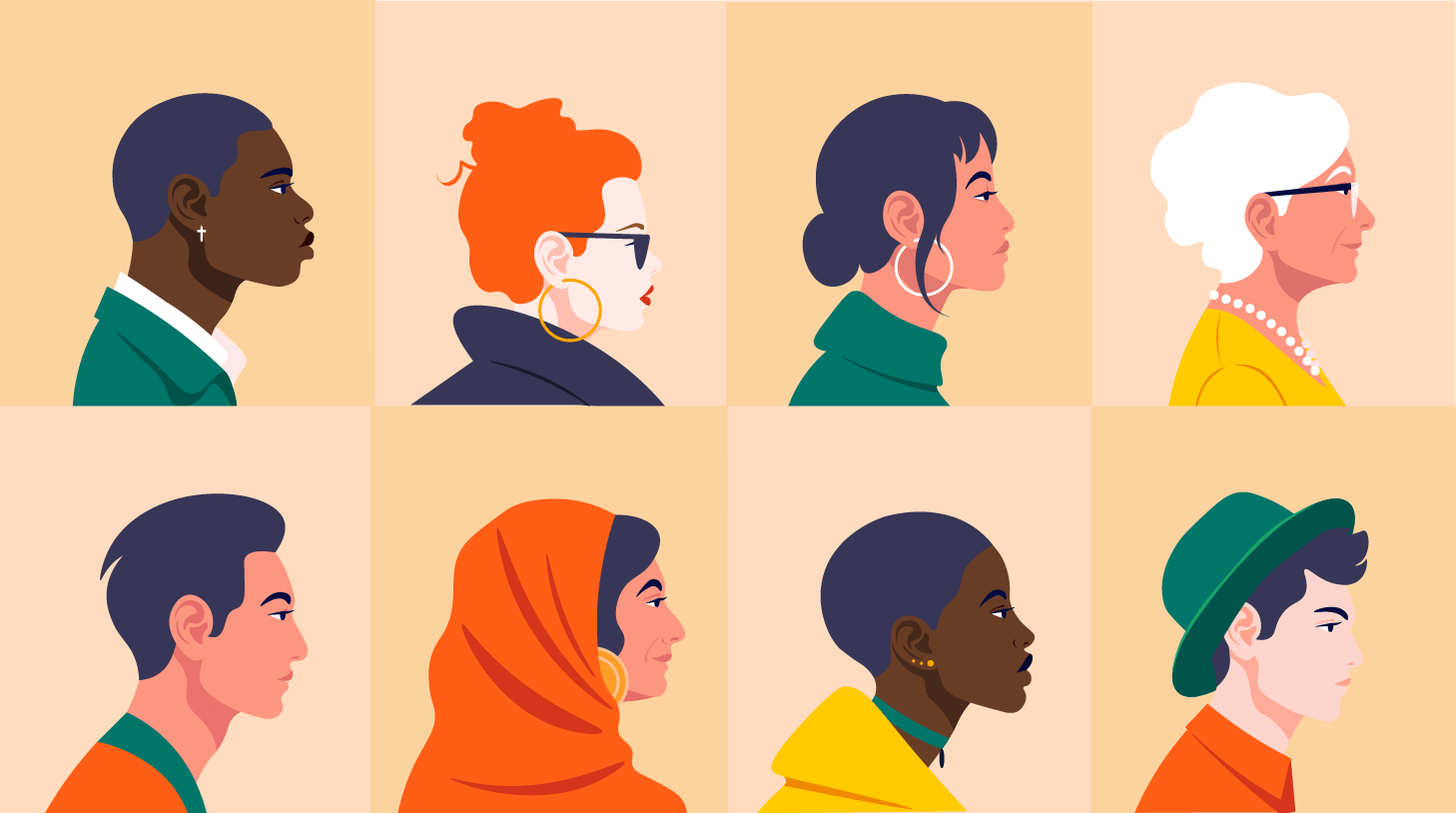One-way video interview biases: potential risks for diversity
Talent Acquisition Manager George is searching for a new digital tool that will boost his company’s diversity efforts. The hiring team had already enabled a blind recruiting solution at an early screening stage and wanted something solid for the interviewing part. On a casual Tuesday morning, George types all relevant keywords in the search bar and many articles pointing to reduced video interview biases pop up. And at first glance, one-way video interviews look like a perfect solution.

One-way video interviews – also known as asynchronous – enable recruiters to eliminate biases by providing all candidates with a uniform interview structure. Candidates record themselves responding to a given set of job-relevant questions. With this set format, there is not much room for common drivers of unconscious biases such as favoring or small talk between assessors and candidates.
On the flip side, there are still unconscious traps you could stumble on. Image and sound are powerful, after all. When you see a candidate for the first time and get cues from how they behave, talk, look and dress like you might get unconsciously triggered. No matter how trained or aware you are, biases will always surface and may sidetrack your attention away from what matters.
Video interview biases: most common risks
So, imagine this scenario: you’re about to evaluate 20 video interviews for an open role in marketing. You’ve handed over four interview questions to candidates, one generic (e.g. “Describe yourself and your career goals in two minutes”) and three job-related (e.g. “What metrics would you use to measure our social media’s performance?”). Each item has unlimited preparation time and the answer is set to a maximum of two minutes.
Despite those given constraints, there is variability in interview answers you receive. Some candidates took the whole two minutes to answer the questions while others spent less than 60 seconds on their responses. The actual responses varied, as well, and of course, you can still see and hear each candidate.
In brief, here are some tricky parts that could trigger video interview biases in this case:
1. Protected characteristics are now evident
What you controlled for during the blind hiring stage will be now visible. You need to be careful with this information and how they might unconsciously impact your evaluation. The umbrella of protected characteristics is huge.
It’s not always the obvious traits that trigger us, such as someone’s skin color or dress code. It could also be that a candidate’s accent might sound funny to your ears, or you might take for granted that a 50-year-old candidate won’t be a perfect fit for a senior position at a dynamic start-up environment. All those elements could be misleading.
2. Non-verbal cues can affect your judgment
Sitting in front of a camera presenting yourself to someone you cannot see is not always that easy for interviewees. Some candidates will feel confident and some won’t. However, this is not necessarily an indicator of how they’ll perform their day-to-day tasks – unless the role entails presenting at a high level or communicating in a similar setup as part of their work (e.g. call centers, telemarketing).
Beware of these no-verbal characteristics and how they impact you. There are some common video interview red flags that might mess you up during evaluation – a noisy background or a multicolored top could sway your judgment in ways you aren’t initially aware of.
3. Evaluating video interviews is a rather new thing
Since one-way video-interviews are relatively new to the recruitment landscape, there’s still a lot to discover going forward. We’re still learning and there are likely more biases that we haven’t identified right away.
Picture this in the above-mentioned scenario: you have two final qualified candidates – one answered their job-related question in 30 seconds while the other’s answer took up the full two minutes. If you don’t pay that much attention to each response, you may prefer the one with the longer answer as they had “more to say”.
But the reality could be that the first candidate had a more accurate answer and cut down the fluff. They were more direct and to the point. For certain roles – let’s say, for editors or public speakers– that would be a good skill to have.
Tips to reduce one-way video interview biases
So, as any other recruiting solution that you use to improve diversity in your business, if you don’t use video interviews the right way, there will still be some stumbling blocks.
[bctt tweet=”No tool and feature will enable you to you to directly succeed in ensuring diversity – rather, it will be your mindset towards diversity that will do the job and your persistent attempts to establish diversity in the core of your business – in the policies you write, the job descriptions you share, the new hires and partners you choose day to day.” username=”workable”]
To build a strong approach from beginning to end, track all biases that could surface along the way – whether that’s judging a candidate for a facial piercing for “being unprofessional” to ruling out a single mother at the decision stage, taking for granted that she is not going to be as efficient at the job, with so many personal responsibilities at hand.
Here are some first steps you could follow to structure the screening process in a way that improves your diversity efforts before and during the video-interviewing stage:
Plan your early-stage screening
If you post your job ad to several job boards you broaden your sources for candidates – and in turn, the opportunity to diversify your candidate pool. You can also share the job ad through multiple social networks and find candidates where they usually hang out.
Use a blind hiring software at an early screening stage to eliminate unconscious biases from resumes and social media profiles, such as photo, age, nationality, etc. Later on, when you review a video interview, remember that content and attitude matters more than non-verbal cues and other physical traits or elements.
Conduct pre-employment assessments
Implementing pre-employment assessments is also crucial when screening applicants. They produce a mostly accurate result on job-related competencies and help spot what matters the most for a specific role.
Whether that’s an external assessment or an assignment you built yourself, it’s better to evaluate them before or coupled with video interviews to make sure that what you saw and heard during the video assessment doesn’t impact your judgment and your full attention is concentrated on those important job-related factors.
Structure questions wisely
What you really want to learn about a candidate from their one-way video is if they have the right skills for the role. To spot them, make sure to address the top must-have skills in the questions.
To achieve that, design interview questions that don’t require further explanation. For example:
- Describe a time when you faced a problem in project management and how you dealt with it.
- What is your biggest achievement in content marketing strategy?
It would be unfortunate to lose out on a great candidate because of an unclear or vague question that needs further explanation. You also must use the same job-related questions for every interview to make sure that you evaluate all candidates equally.
Share video-interview tips
It would be also helpful, both for candidates and you as an evaluator, to share some video interview tips with candidates so that they have clear expectations and useful resources to prepare the right way. For example, share some tech and troubleshooting tips with candidates to set up their gear.
Remember to try and ignore the background noise or distractions that could trigger unconscious biases, whether that’s the wall behind them or poor audio/video quality. Focus on answers and attitude.
Here, you can find top video interview tips for candidates that will help you unify the process even more, and prepare all interviewees equally for success.
Train recruiters and hiring managers
All hiring managers and recruiters should be well aware of the video interview diversity risks and biases they could come across with. Apart from not discriminating based on protected characteristics, they should learn how to evaluate answers properly, based on related competency and other screening assessments (e.g. resume, pre-employment assessments, etc.).
It’s important to be aware of some of the common video interview red flags mentioned above, such as poor body language, that are not necessarily valid. Once assessors become aware of those mental traps and how to detect them early, your road to diversity will be on a safe track.
You could also design a D&I training to help your employees understand their personal triggering factors that could enforce biases.
Remember – biases are everywhere
Dear George, as you understand, one-way video interviews will help you improve your company’s diversity, but you have to utilize them carefully and combine them with other features and practices. Tech and tools are not going to be the single factor in this effort; there needs to be a strong diversity strategy in place, in every step of the recruiting funnel – and one-way video interviews can only help you get closer to making your D&I vision a reality.




